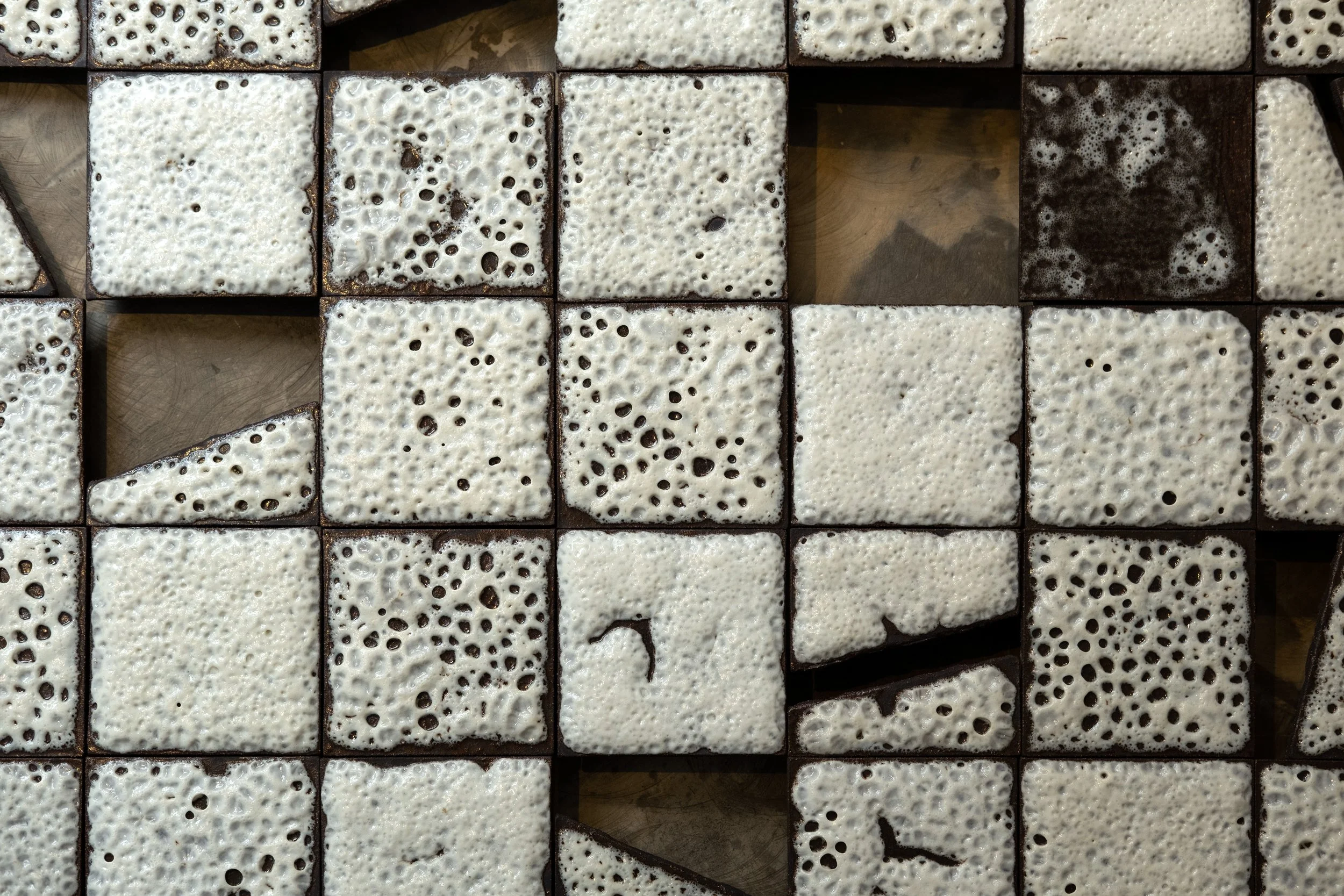The installation It Takes Two Hands to Make a Home is a video installation encompassing two main elements: hand-crafted ceramic tiles and video making. It presents six different videos mapped on ceramic screens in various sizes. Noee Zahavy, a female designer, uses archival materials from various times and locations, including her family archive, depicting women’s labour. The installation challenges the traditional, direct way of viewing imagery, and therefore prompts a re-evaluation of the nature of memories and the reliability of the archive as a source. It poses questions surrounding concepts such as home, house, labour, and women’s representation, rather than striving for clear answers.
Noee Zahavy, a 32-year-old graphic designer and visual artist based in Geneva, is particularly passionate about research-oriented projects and site-specific artistic interventions, such as those in institutions, libraries, or archives. Her practice encompasses editorial design within the realms of art, architecture, and culture, alongside self-directed projects. Noee recently graduated from the MA Space and Communication program at HEAD
in Geneva, Switzerland.
It Takes Two Hands to Make a Home
Noee Zahavy
CERAMIC MAKING
To represent the distorted nature of memory, Noee developed a new recipe for a ceramic glaze inspired by the Fat Lava glaze which originated in West Germany in the 60s. This glaze is characterised by its thick, cratered, and bubbly texture often coating domestic objects. This bold texture makes it ideal for creating a distorted surface.
In celebrating and honouring the domestic space as a space of labour, Noee chose to apply the glaze to dark ceramic tiles she handcrafted using a manual technique. These tiles represent the domestic space and function as units that can be assembled to form a surface for the projected imagery. The assembled screens are embedded in mahogany wood structures, which support and frame the representation of a domestic space.
ARCHIVE AS A TOOL
Working with archives and investigating the interplay between the personal and the collective, is part of Noee’s practice. She collects footage from various archives -public, national, or familial - as a visual representation of shared memory.
In this project, she aimed to situate herself within various scales of belonging, with a focus on women’s labour histories. As she browsed through a wide range of archives, mostly from European countries, she found a consistent lack of representation of this narrative. Documentation of women working physically in fields, construction or factories is scarce, and when it does exist, it is mainly found in archives from the post-war period, when countries wanted to showcase the entire population’s efforts to rebuild the nation. Most archives, however, document women in domestic spaces: feeding children, cleaning,
or practising hosting manners.
Focusing on these often forgotten stories allowed her to honour and highlight the domestic labour of women, which unfortunately is still not recognized as labour today. The methods and processes in this project enabled Noee to grow an archive that more accurately reflects the complexities of memory, as well as challenges the notion that archives are reliable sources of information.
Installation Size: 6mx6mx2.5 (adjustable)
Materials: Structures are made out of Mahogany wood (3.5x3.5) and Glazed ceramic tiles.
Five video projectors, One slide projector.
Videos: 06'01, 04'40, 03'47, 02'29, 02'18 min.
Photos by Sylvain Leurent - HEAD-Genève and Amit Ayalon. Video by Vincent Grange and Tanguy Troubat.



